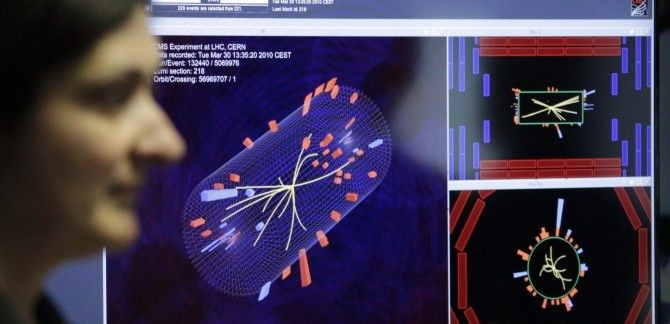B-meson decay seen at LHC may help solve antimatter mystery

Using data from the Large Hadron Collider (LHC) experiment, scientists have observed the decays of a rare particle - dubbed 'b-meson' - that could provide clues on why antimatter all but disappeared after the Big Bang.
The study of the rare particle decays could explain why the universe has more matter than antimatter.
When mesons decay they actually transform into something else. Scientists think studying these different decays and their properties will reveal the fundamental forces and symmetries of nature.
B-mesons are a rare and special subgroup of mesons composed of a quark and anti-quark. While b mesons were common after the Big Bang, they are not believed to occur in nature today and can only be created and observed under experimental conditions in the LHC or other high-energy colliders. B mesons are so named because they contain a bottom quark and an antiquark.
The exotic b-meson particles exhibit what physicists call CP violation i.e. they don't follow the same laws as their opposite states of matter. They violate something called CP symmetry.
The general idea behind CP symmetry - C stands for charge conjugation and P stands for parity - is that even though matter and antimatter are opposites they are equal, so the same basic rules of behavior should apply. The fact that we live in a world composed almost entirely of matter makes CP violation one of the greatest unsolved problems in physics.
The team led by a Syracuse University physicist observed the decay of a special type of b meson, which are created when protons traveling at nearly the speed of light smash into each other, at the LHC.
We know when the universe formed from the Big Bang, it had just as much matter as antimatter, says physicist Sheldon Stone of Syracuse University in New York. But we live in a world predominantly made of matter, therefore, there had to be differences in the decaying of both matter and antimatter in order to end up with a surplus of matter.
Inside the giant collider, two beams of subatomic particles called 'hadrons' travel at close to the speed of light with very high energies before colliding with one another. Physicists will use the supercollider to recreate the conditions just after the Big Bang and analyze the particles created in the collisions.
An abundance of different types of quark will be created by the LHC before they decay quickly into other forms.
We want to figure out the nature of the forces that influence the decay of these [B meson] particles, Stone says. These forces exist, but we just don't know what they are. It could help explain why antimatter decays differently than matter.
© Copyright IBTimes 2024. All rights reserved.





















